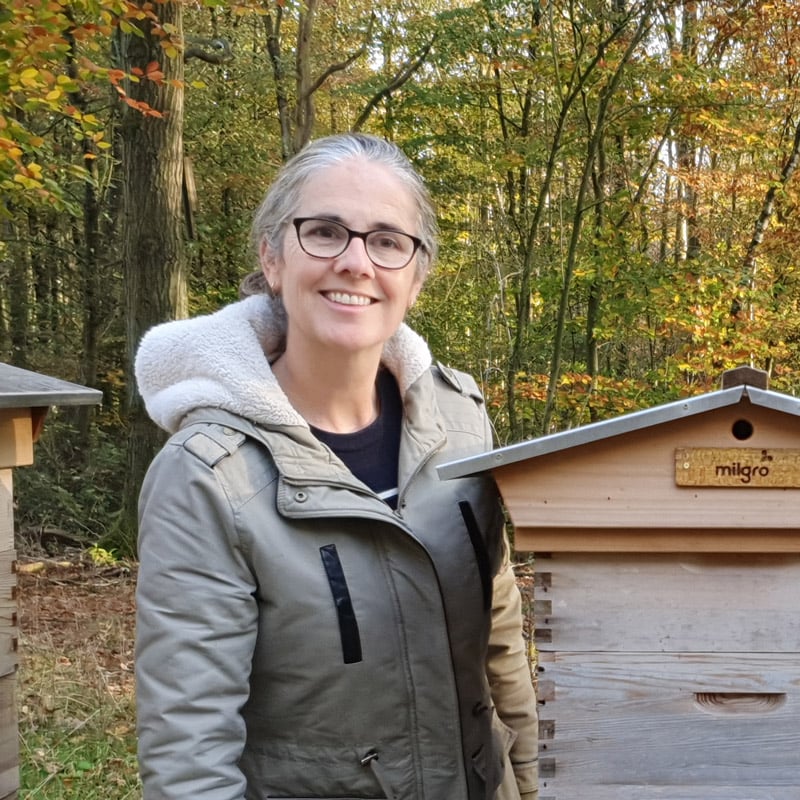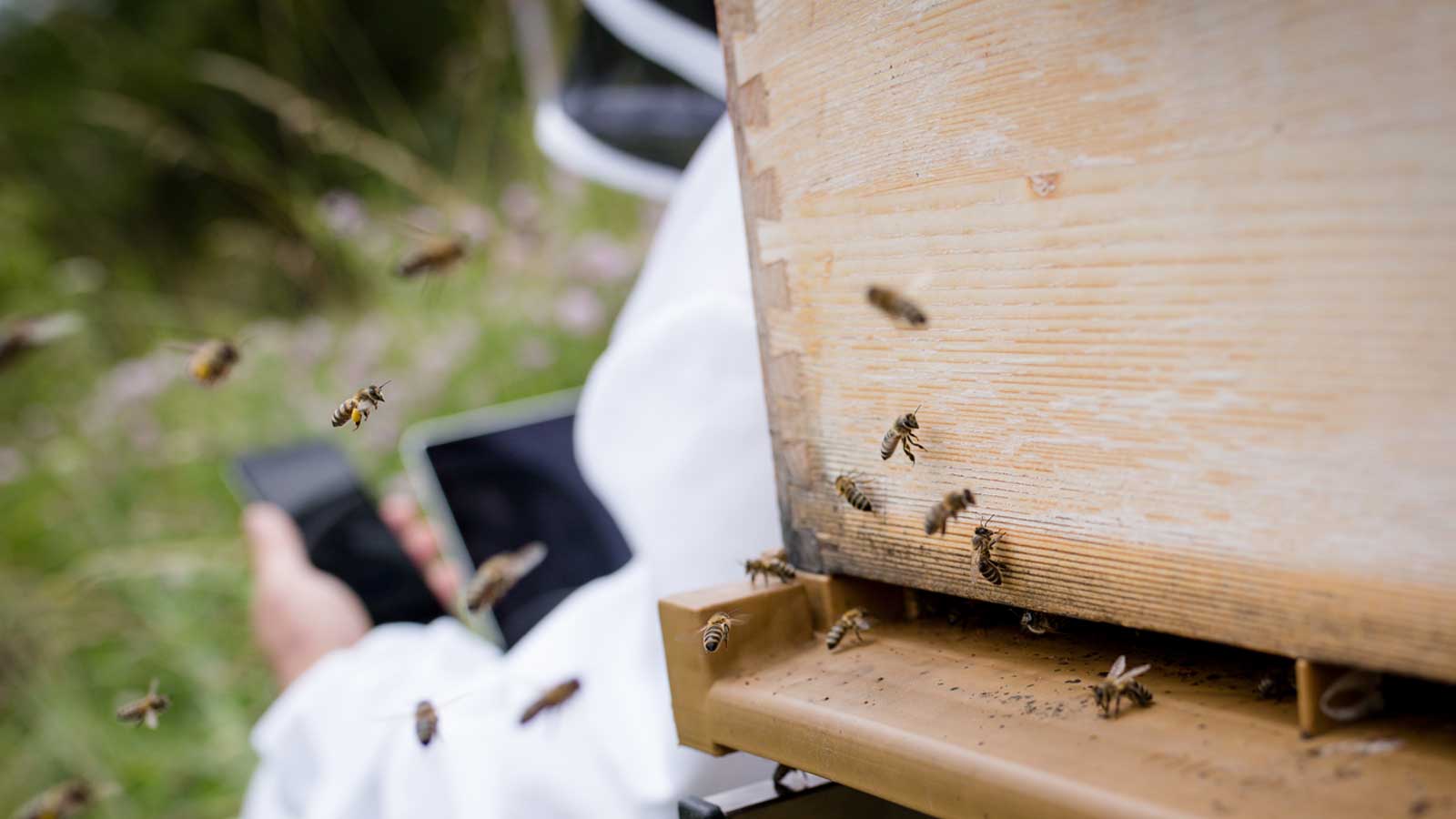In nature management, collecting data with the help of technology increasingly contributes to finding a sustainable solution for environmental issues. For example, data and technology can make an important contribution to research into the well-being of bees. A beehive is very suitable for placing sensors for measuring temperature, weight and sound.Weight can be used to measure whether a bee colony has sufficient food in the house. The temperature and sound indicate whether the queen is still actively laying eggs and whether the hive is filling up due to reproduction.
Research program B-good
This data provides insight into bee behavior and the beekeeper insight into the actions required for a vital bee colony. The data measured by the Liquid Nature bee monitor is linked to a database in which data from various bee colonies and beekeepers is collected nationally and internationally. The organization that manages and develops the bee monitor, theBEEP foundation, works together withNaturalis and Wageningen University & Research (WUR). With itsB-good research programme, WUR focuses on bee health. This creates a best practice for beekeepers and also a diagnosis of the state of the bee colonies per location.
Insight into bee behavior
Honey bees are mainly domesticated in the Netherlands and bee colonies are managed and maintained by beekeepers. In order to improve the health of the bees, it is therefore important to provide beekeepers with good information about bee behavior and what the best actions are at which time. By placing sensors in the beehive, data is generated that provides insight into best practices for modern beekeeping. If the beekeeper only opens the hive when it is really necessary, the bees are minimally interrupted in their activities.
BEEP Base and BEEP App
As a Liquid Nature beekeeper, for example, I participate in theB-good research programme. The hives I manage are equipped with a bee monitor with sensors, the BEEP, developed by the foundation of the same name. The monitor includes the BEEP Base, a measuring system with a weight sensor that I placed under the beehives. In addition, there are sensors such as a thermometer, microphones and a humidity sensor in the beehives. I can remotely monitor weight, temperature, noise or other parameters in the hive from the linked app.
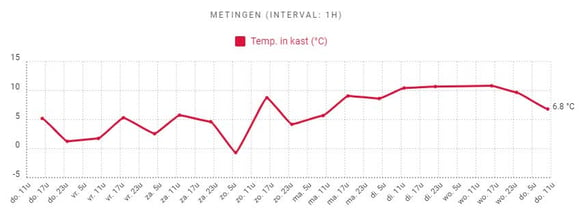 A graph that I can view via the BEEP app
A graph that I can view via the BEEP app
What does the data from the BEEP app provide for the beekeeper?
Timing is everything in beekeeping, so weight, temperature, noise and humidity are important variables for a bee colony diagnosis. This allows the beekeeper to determine which activities are or are not desired. By setting alerts in the BEEP, the beekeeper is always and everywhere informed of important changes in the hive. For example, the BEEP can give a signal when the hive is overcrowded with bees and honey. After all, this can mean that the bee colony will swarm and that is useful for a beekeeper to know. But a honey stock that is too small is also an important alert. After all, this gives the signal to provide additional feed and to ensure more bee-friendly flowers in the vicinity of the bee colony.
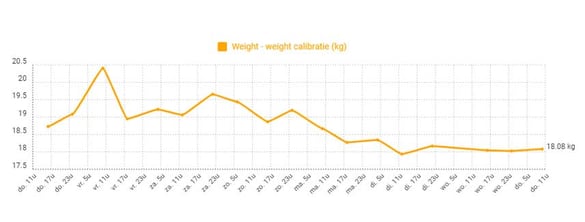
I can intensively monitor the weight of the hive via the BEEP app
Keeping balance through data
As the weight of the hive steadily increases, the bees are collecting nectar and producing honey. For example, a cupboard can weigh up to three kilos on a beautiful summer day. If the weight of the hive decreases slowly, the bee colony is sick or cannot find enough food. If the weight drops abruptly, the hive may have toppled, robbery, or bees swarming. Keeping a good balance requires insight and experience. TheBEEP app helps with that.
Best method based on research
With the data obtained, historical overviews can be analyzed and objectively measured whether the interventions have the right effect. Different beekeeping methods can be compared. WUR's B-good research has led to an increasing choice for a Darwinian approach to beekeeping, which is as natural as possible. The beekeeper focuses on native species that suit the local climate and intervenes as little as possible to allow natural selection to take place. Traditional methods such as treatment with oxalic acid against parasites or the assembling of weak colonies are no longer used by the beekeeper.
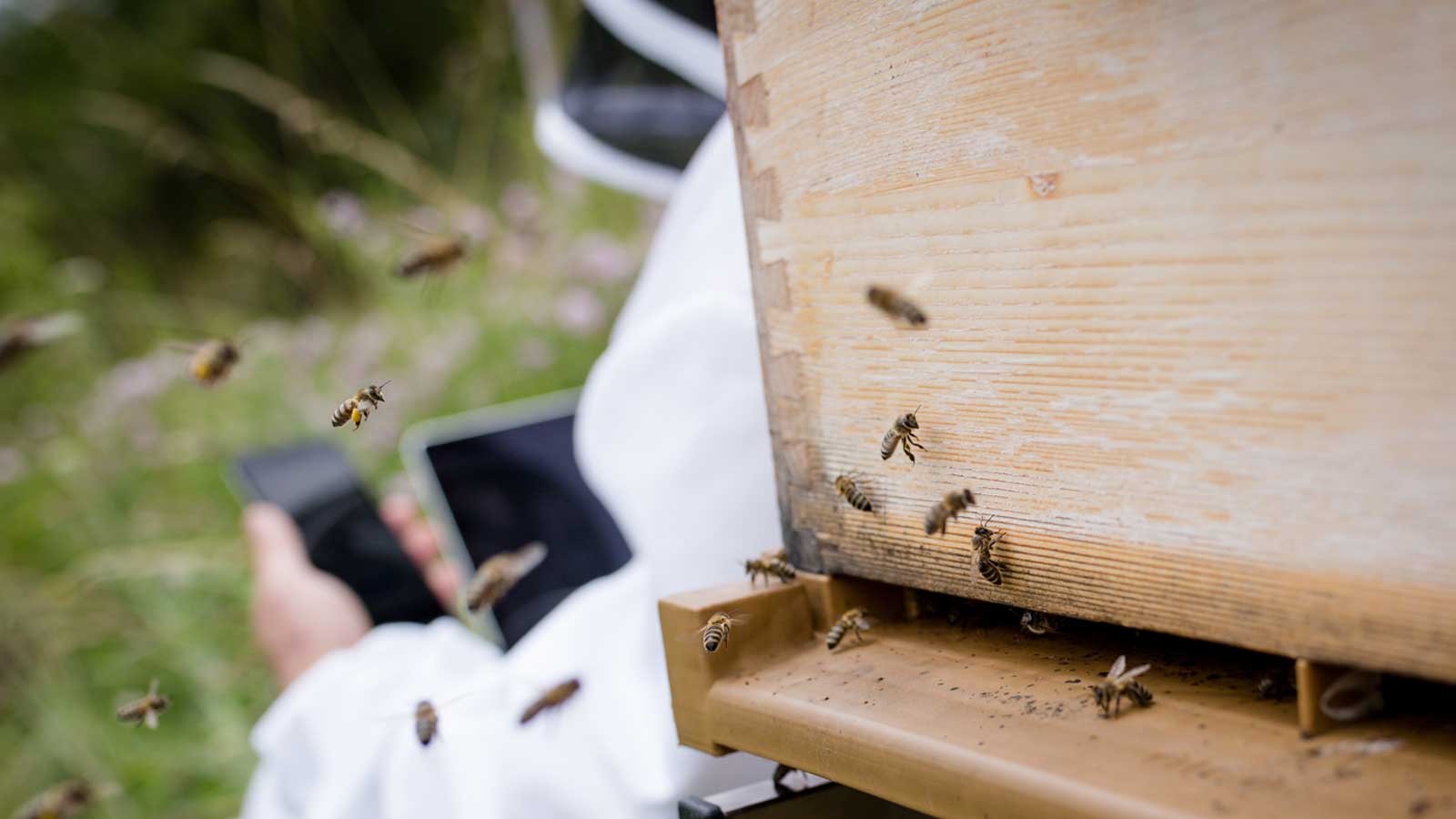
How the beekeeper intervenes based on data
As a beekeeper at Liquid Nature I take care of 50 beehives at 20 locations. From the BEEP app I regularly monitor fluctuations in weight, temperature and sound. Using the BEEP data on the hives has now resulted in:
- Adding an extra brood or honey chamber if the hive becomes overcrowded
- Creating a brooder so that the natural process of splitting the bee colony can continue
- Capturing a swarm and placing it in a hive. In the Netherlands there is a good chance that a swarm in the wild will not survive. A beekeeper wants the swarm to have a good chance of survival. A new bee home will increase that chance.
- Stabilize hive so that it does not wobble or blow over
- Replace BEEP battery, reconnect to the network or do software updates
- Harvest honey if the amount of honey allows. Most honey is for the bees themselves.
- Feeding the bees. We only do this in exceptional cases if a young bee colony starts up in late summer and has to build up a winter honey supply in a short time. Or when a colony of bees barely survives the winter and just needs a little push to start up in the spring.
- The amount of honey (weight) is an indicator of whether there are sufficient gestation plants with nectar and pollen in the vicinity of the hive. If this is not the case, the beekeeper can arrange for the planting of bee-friendly flowers.
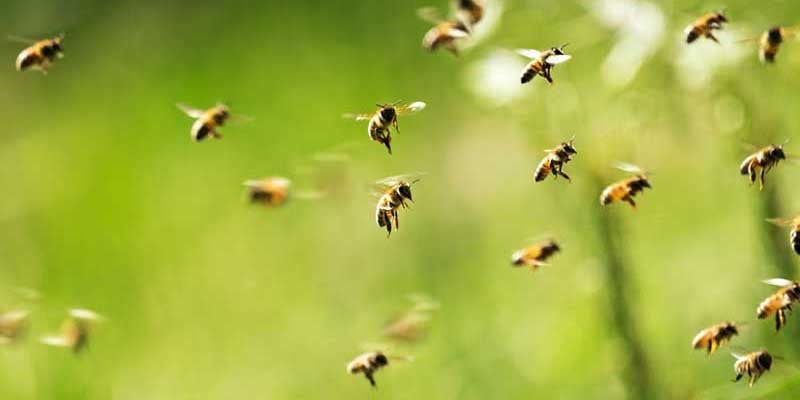
Hopeful results
The research has now entered its third year. The first results are already valuable to beekeepers and the first results have already triggered a lot in leading beekeeper routines. A first conclusion, for example, is that the future lies in biodynamic treatment of bees. The biodynamic beekeeper sees swarming as healthy behavior that does not need to be prevented. Especially strong colonies swarm and the self-formed swarm results in a stronger bee colony than the artificial swarm, which is made by the beekeeper. Oxalic acid and other pesticides against Varroa mite should be omitted, so that natural selection can take place. The bee colonies with the best hygiene behavior remain alive. However, the supply of nectar and pollen is still insufficient in many locations. The number of suitable nesting options also appears to be insufficient. In this way, the beekeeper remains important in supporting the honey bees.
The importance of the bee and technology for Milgro
Milgro has connected itself to the bee, not only by including the animal in our logo, but also by sponsoring its own hive, which collects data through IoT technology for the benefit of research. A nice parallel with our technology with which, together with our methodology and approach, we enable companies to implement the circular transition. The result is a healthy balance between earth & earn.
Stay informed
Milgro regularly publishes articles and blogs about issues that are close to their heart, such as the bee. You will also find regular updates on collaborations, the importance of natural capital management and sustainable waste and raw materials management. Want to stay informed? Follow Milgro on LinkedIn.
Sources: www.beep.nl | B-Good onderzoek WUR | Jolijn de Rooij, juli 2020, PCM, De bijen leren kennen met de Beep | Nederlandse Bijenhouders Vereniging | riojournal.com








